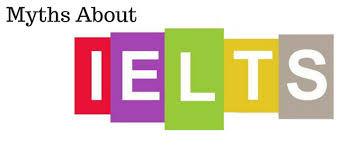IELTS vs TOEFL: What You Need to Know!
- Lauren Simpson

- Jan 13
- 4 min read
Updated: Jan 20
When it comes to proving your English proficiency for academic, professional, or immigration purposes, two of the most widely recognized exams are the IELTS (International English Language Testing System) and the TOEFL (Test of English as a Foreign Language). Whether you're aiming to study abroad, secure a job, or apply for a visa, choosing the right test is essential. So, what’s the difference between the two? How do you decide which one is best for you?
In this article, we’ll break down the key differences between IELTS and TOEFL, so you can make an informed decision on which test suits your needs.
1. Test Structure: IELTS vs TOEFL
Both IELTS and TOEFL assess four main language skills: Listening, Reading, Writing, and Speaking. However, the format and scoring of these sections differ significantly between the two tests.
IELTS:
Listening: 4 sections, 40 questions (approx. 30 minutes)
Reading: 3 sections, 40 questions (60 minutes)
Writing: 2 tasks (150 words for Task 1, 250 words for Task 2) (60 minutes)
Speaking: A face-to-face interview with an examiner (11-14 minutes)
IELTS is available in two formats:
Academic: For students applying to universities or institutions for higher education.
General Training: For those seeking immigration or working experience in English-speaking countries.
TOEFL:
Listening: 4-6 lectures and conversations, 34-51 questions (60-90 minutes)
Reading: 3-4 passages, 36-56 questions (60-80 minutes)
Writing: 2 tasks (integrated and independent) (50 minutes)
Speaking: 6 tasks (1 minute per task) (20 minutes)
TOEFL is offered in one format, typically designed for students applying for university admissions.
2. Test Delivery: Paper-Based vs. Computer-Based
One of the main differences between IELTS and TOEFL is the way the tests are delivered.
IELTS: The Listening, Reading, and Writing sections are paper-based (though computer-based IELTS is available in some locations). The Speaking test is face-to-face with an examiner.
TOEFL: The entire test, including Listening, Reading, Writing, and Speaking, is taken on a computer. The Speaking test is recorded, and your responses are sent to ETS for grading.
This distinction can affect your decision based on your comfort with technology and preference for a face-to-face interaction in the Speaking section.
3. Scoring System: How They Compare
Both exams use a numerical score system, but the scoring methods and score ranges differ.
IELTS: Scores range from 0 to 9 for each section (Listening, Reading, Writing, and Speaking). The overall band score is an average of the four section scores.
TOEFL: Scores range from 0 to 30 for each section, with a total score range of 0 to 120. The total score is a sum of the four sections.
Example: A score of 7.0 in IELTS is roughly equivalent to 90-91 in TOEFL, though the conversion can vary slightly.
4. Test Duration: How Long Does It Take?
IELTS: The total test time is approximately 2 hours and 45 minutes for the Listening, Reading, and Writing sections, plus an additional 11-14 minutes for the Speaking test.
TOEFL: The total test time is approximately 3 hours, depending on the number of questions in the Reading and Listening sections.
Though both tests are relatively similar in length, TOEFL typically takes a bit longer.
5. Popularity and Acceptance
Both IELTS and TOEFL are widely accepted by universities, employers, and immigration authorities around the world. However, their popularity can vary by region.
IELTS is more commonly required for immigration purposes and is widely recognized in the UK, Australia, Canada, and parts of Europe.
TOEFL is more commonly accepted in North America, particularly in the USA and Canada. It's also the preferred test for most American universities.
6. Test Availability: Where Can You Take It?
IELTS is available in more than 140 countries and offers both paper-based and computer-based testing options. The exam is usually conducted multiple times a month.
TOEFL is available in over 150 countries and is offered as an Internet-based Test (iBT). The test is available on specific dates throughout the year.
If you have a specific region or institution in mind, it’s important to check which test they prefer or require.
7. Which One Should You Choose?
The choice between IELTS and TOEFL depends on various factors, including your personal preferences, the country or institution you are applying to, and your strengths in test-taking.
Choose IELTS if:
You prefer face-to-face speaking interactions (for the Speaking test).
You are applying to universities or institutions in the UK, Australia, or Canada.
You prefer a more varied test format with paper-based sections.
You are looking to take the General Training version for migration or work purposes.
Choose TOEFL if:
You prefer a completely computer-based test.
You are applying to universities in North America, particularly in the USA.
You are more comfortable with speaking into a microphone rather than talking to a human examiner.
You prefer a test with a more standardized format across all sections.
Conclusion
Both IELTS and TOEFL are respected tests that assess your English proficiency for a range of academic and professional opportunities. The decision between the two comes down to your personal preferences, the requirements of your target institutions, and which format best aligns with your strengths.
At IELTS Uganda, we offer expert guidance and preparation for both IELTS and TOEFL. Whether you are aiming for IELTS Academic for university admission or preparing for TOEFL for study in the USA, our expert trainers can help you achieve your desired score.
Need help deciding which test is right for you? Contact IELTS Uganda today for personalized advice and start your journey toward success!



Comments